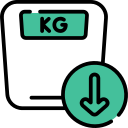Q. What are the most common types of cancer, and how does each affect the body differently?
Doctor Answer is medically reviewed by SecondMedic medical review team.
When discussing the most common types of cancer, understanding how each uniquely impacts the body can help you recognize symptoms early and make informed decisions about prevention and treatment. Here’s a breakdown of some of the most prevalent types of cancer and how each affects the body differently:
1. Lung Cancer
-
Impact on the Body: Lung cancer typically begins in the cells lining the bronchi or other parts of the lung. It can interfere with breathing, leading to persistent cough, chest pain, and shortness of breath. Advanced lung cancer may spread to other organs, affecting their function and causing widespread symptoms.
-
Who’s at Risk: Smoking is the primary risk factor, though exposure to pollutants and genetic factors also play a role.
2. Breast Cancer
-
Impact on the Body: This cancer generally starts in the milk ducts or lobules of the breast tissue. It can form lumps or cause skin changes, and in later stages, spread to lymph nodes or other organs. Breast cancer can also lead to hormone changes, pain, and, if untreated, significant organ damage.
-
Who’s at Risk: Genetic factors (like the BRCA gene), hormone replacement therapy, and lifestyle factors may increase risk.
3. Prostate Cancer
-
Impact on the Body: Prostate cancer starts in the prostate gland, which produces seminal fluid. As it progresses, it can affect urination, sexual function, and may spread to the bones or lymph nodes. Some prostate cancers grow slowly, while others are aggressive, impacting overall quality of life.
-
Who’s at Risk: Aging, family history, and dietary factors can increase the risk for men, particularly those over 50.
4. Colorectal Cancer
-
Impact on the Body: Colorectal cancer affects the colon or rectum, often beginning as benign polyps that become cancerous. This cancer can cause changes in bowel habits, rectal bleeding, abdominal pain, and weight loss. In later stages, it may spread to the liver or lungs.
-
Who’s at Risk: Diets high in processed foods, low physical activity, obesity, and genetic predispositions can increase risk.
5. Skin Cancer (Melanoma and Non-Melanoma)
-
Impact on the Body: Skin cancer commonly begins in skin cells exposed to UV rays. Melanoma, the most aggressive type, can spread to other organs if untreated, leading to serious health issues. Non-melanoma skin cancers, such as basal and squamous cell carcinoma, are less aggressive but can cause local damage and disfigurement.
-
Who’s at Risk: UV exposure from sunlight or tanning beds, fair skin, and family history increase the likelihood of developing skin cancer.
6. Leukemia
-
Impact on the Body: Leukemia affects blood and bone marrow by producing abnormal white blood cells. This interferes with the body’s ability to fight infection, causing symptoms like fatigue, frequent infections, and easy bruising or bleeding.
-
Who’s at Risk: Leukemia can affect people of all ages, though genetic predispositions and exposure to certain chemicals or radiation increase risk.
Each type of cancer presents unique challenges and symptoms. Early detection, screening, and healthy lifestyle choices are powerful tools to reduce risk and improve outcomes. Remember, regular check-ups and prompt attention to unusual symptoms can make a significant difference in managing and treating cancer.











